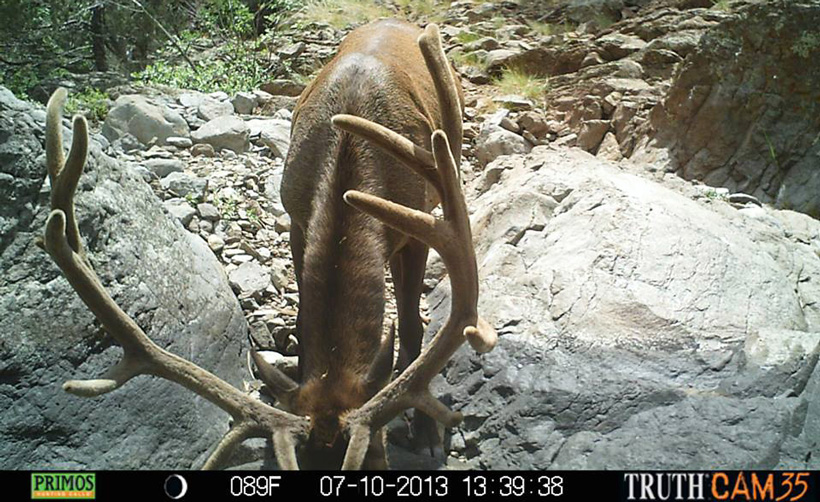Our friends over at goHUNT.com teach you how to make the most out of a rainy hunting season.
From approximately July through September, the Southwest experiences a weather pattern known as the monsoon. Although a monsoon is really just a switch in the localized wind patterns, it brings with it thunderstorms that create torrential bursts of heavy rain on a regular basis, often daily.

Even in the most arid regions of the Southwest, the monsoon can increase precipitation drastically for a few summer months. For example, take Phoenix, AZ. From April to June, the Phoenix area averages approximately 0.10 inches of precipitation per month. In contrast, from July to September, Phoenix averages almost 1” of rain per month.

A little further north in Flagstaff, AZ., that changes from 0.7 inches per month to almost 3” of precipitation per month, respectively. Historical temperature and precipitation for every unit in each Western state that goHUNT covers can be found on each Unit Profile on INSIDER.
The monsoons can be unpredictable with both isolated and scattered showers. As an example, let’s look at Flagstaff, AZ. again. Flagstaff is located for practical purposes in the center of the state. It is located at 7,000’ in elevation and is just south of the tallest mountain peaks in the state with Humphrey’s Peak coming in at 12,633’. In 2012, Flagstaff received 6.30” of rain during the monsoon season; however, in 2013, Flagstaff received 15.70” over the same time period. In both 2012 and 2013, Phoenix—just 144 miles south—received almost exactly 3” of rain. Additionally, over the last 10 years, Flagstaff has averaged approximately 1.5” of rain in September; during that span there were four years when less than an inch of rain fell during the month. Again, the bottom line is that the weather during this time of year is unpredictable.
In many western states, the monsoon season coincides with several big game hunting seasons—most notably archery antelope, deer, and elk. You can generalize the effects of the monsoon on any given hunt during that time of year. If it’s dry, sit water; if it’s wet, don’t focus your efforts on water. Yet, depending on the severity of the monsoon, or lack of one, you can adjust your hunting strategy to get the most of the monsoon’s unpredictable weather. Below are a few ideas to get the most from the monsoon this season.
Elk

Elk rely more heavily on water than any other Southwestern big game species, especially bulls during the rut. A bull will wallow almost every day during the rut, if possible. Additionally, rut-weary bulls will seek out water on a regular basis; perhaps multiple times during the day during the heat of rut activity.

During dry years when the monsoons have missed your hunting unit, sitting over water can be your best bet at a trophy bull, especially if water sources are few and far between. If showers have initially filled up most of the tanks in the area, but those have now dried up, it becomes a little more challenging. In this case, bulls may have several options. Your best bet is to put some time in scouting to see if you can tell which water sources are being used more heavily and which ones are being used by bulls. Sitting water may be less effective under this scenario, but sitting water during the middle of the day or early afternoon instead of taking a nap at camp may be just the opportunity needed to take a great bull. If nothing materializes, but rut activity—bugles—occur, do not hesitate leaving the water to chase the bugles.
Finding wallows can be difficult. One can look in drainages that often hold water or find low spots on even ground. Unfortunately, there is no real science to finding where a bull might choose to cool off. During wet years when the roads are muddy, a bull may take an afternoon roll in the muddy water right in the road. While driving to and from your hunting locations, look hard at big pools of water in the road. It’s pretty easy to see the marks made in the mud by an 800 lb. animal with impressive head gear.
The immediate—up to 24 hours—after a heavy rainfall provide perfect stalking conditions. Soaking monsoon storms can dampen even the noisiest ground cover, such as leaves, sticks and pine needles and cones. Take advantage of a soaking storm by getting the wind right and sneaking into a herd of unsuspecting elk. This is obviously easiest if the elk are vocal, but often, after a storm, elk may be less vocal or completely quiet. If the bugles stop, slowly move through elk habitat that you know elk tend to use based on your scouting or previous hunts.
Monsoon safety tips
- Actively monitor the weather on a mobile app or radio.
- Avoid hunting during severe storms.
- Dress appropriately and carry rain gear in your pack.
- During lightning storms avoid:
- Open locations.
- High places, such as hilltops and ridgetops.
- Tall, isolated trees.
- Water.
- If stuck in a lightning storm, find protection in lower vegetation, such as saplings or underbrush.
- Never cross flooded roadways or stream and river crossings.
- Remember, flooding can be worse in burned areas without much ground cover.
